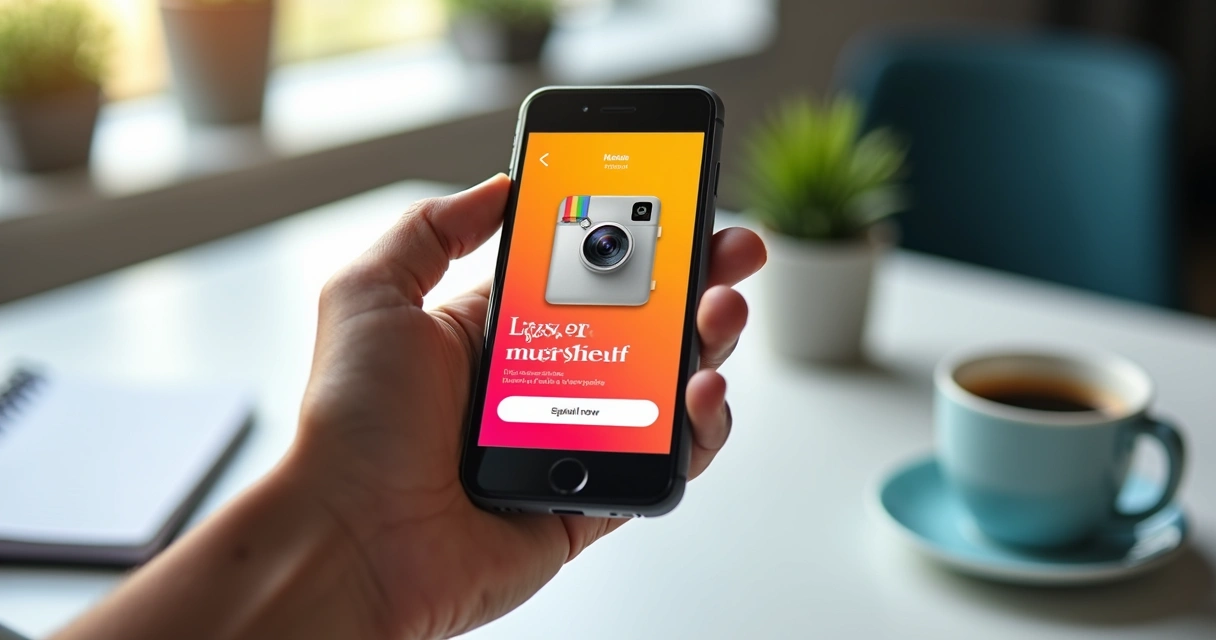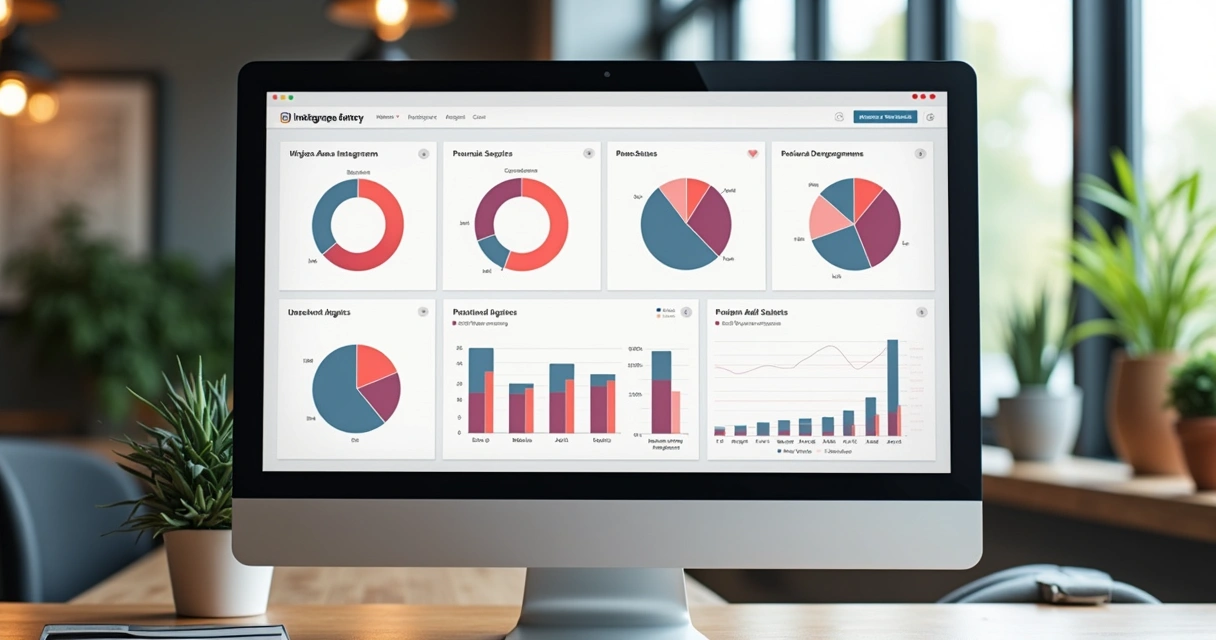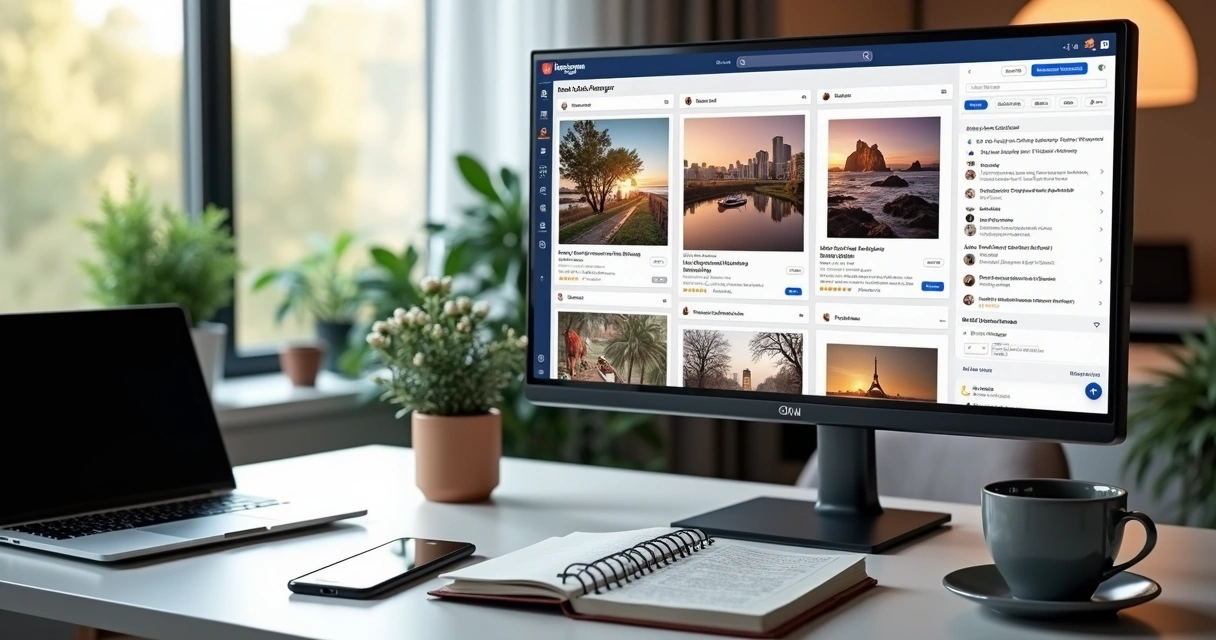If you spend even a few minutes scrolling, it’s clear that Instagram has become one of the most creative and competitive spaces for brands. But capturing your audience’s attention isn’t about luck or guesswork. It starts with understanding the craft behind successful ad creatives. In this practical guide, you’ll discover every step for building a standout anúncio para instagram—from spark of concept to campaigns that drive real results. Expect frank advice, honest stories, and proven steps. If you’ve struggled to get good returns or feel lost among formats, budget settings, and creative testing, you’re not alone. Let’s walk through the real process and how AI—like the solutions Automads brings to market—can reshape the speed and success of your advertising on Instagram.
Instagram ads today: more than a quick post
Instagram isn’t only about pretty pictures. It’s about hitting the sweet spot between a scroll-stopping image, a punchy message, and the right audience. The modern “anúncio para instagram” is deeply tied to mobile behaviors, video storytelling, and data-driven improvements.
The challenge? You need a wide range of visual assets. And you need them now. Your message must land on audiences already bombarded with thousands of competing stories daily.
Speed and creativity now decide who gets seen—and who disappears.
Big and small brands alike must test constantly. That means making new captions, images, videos, and story formats in hours, not weeks. Automation and AI have changed the pace. But we’ll get into that real soon.
First steps: define your goals and audience
Before opening Meta Ads Manager or grabbing your best photo, stop for a moment. Working out what you want to achieve, and who you’re talking to, sets the stage for every decision to follow.
Get specific with goals
Consider these typical objectives when planning your Instagram advertising:
- Brand awareness: Reaching as many relevant people as possible, leaving a strong impression.
- Engagement: Pushing for likes, comments, shares, or saves to interact with your message.
- Traffic: Bringing users to your website, store, event page, or landing page.
- Leads or sales: Getting signups, contact details, or direct purchases through your ads.
- App installs: Promoting downloads and first opens if you have a mobile app.
Not sure which to pick? It’s okay! Sometimes, tests show the “wrong” objective is better for your brand. Be flexible, but choose a focus for each campaign to make measurement meaningful.
Know your audience inside and out
Effective ads are based on smart audience choices. The more specific your segment, the stronger your creative can become:
- Demographics: Age, gender, location, language, education, or relationship status.
- Interests: Hobbies, shopping habits, pop culture, or professional fields.
- Behaviors: Recent purchases, mobile device types, travel habits, or content consumption.
- Custom audiences: Users who visited your site, liked your page, joined your email list, or interacted with a certain post.
- Lookalike audiences: Automated targeting of new people sharing traits with your best customers.
Yes, tools like Automads and Meta’s platform make these targeting options accessible. But the real power is how you match your creative message with each group. That part requires intuition, plus some testing.
When you know your audience, you already know what to say.
Formats matter: how to choose the right Instagram ad style
You have several creative formats at your disposal—each with its own strengths and reasons to use it. There’s no single winner. Instead, you’ll need to experiment and sometimes use more than one format per campaign.
Single image ads
Simple, classic, and effective. A clean photo or graphic with a clear message. Works well for announcements, special offers, or reinforcing brand identity. Try to keep text to a minimum on the image, as Instagram prefers visuals that don’t feel cluttered.

Video ads
Short videos (between 5 and 60 seconds) allow you to tell stories, show products in action, or share testimonials. Movement grabs the eye fast. Use captions—most watch with sound off. Video production can seem daunting, but now there are AI-powered generators, such as the AI ad video creator from Automads, that create high-quality videos in minutes rather than days.
Carousel ads
Let users swipe through several images or videos in a single ad unit. These are ideal for product collections, step-by-step explanations, or highlighting different features. A carousel forces viewers to interact, making it powerful for engagement goals.
Stories ads
Stories cover the full vertical screen, so your message owns the entire view for a few seconds. They feel less like ads and more like native content. Use Stories for time-limited offers, behind-the-scenes looks, or anything urgent. Animations and stickers can help, but don’t overdo it.

Reels ads
Reels combine music, quick edits, and bite-sized video storytelling. Users engage with Reels in a playful, discovery-focused feed, so humor and authenticity work wonders. Short, bold, and surprising videos grab attention here.
Instagram Shopping ads
If you sell products, Shopping ads showcase items that users can buy directly from Instagram. These are tightly linked to your catalog—clean images, clear descriptions, and real-time inventory take center stage.
Which format should you choose? Test them all. Some messages prefer images, others need sound and movement. Let results guide you, not assumptions.
The anatomy of a standout Instagram ad
People don’t click ads because they’re pretty. Instead, they respond to instant clarity, a touch of emotion, or sometimes simple curiosity. Every ad should mix these key ingredients:
- Visual punch: Bold colors, interesting angles, and clean layouts draw eyes first.
- Clear message: Your main point must be understood within a second or two. Focus on just one offer or idea.
- Brand consistency: Use your logo, style, and tone. Every ad should feel like you, not a random post.
- Call to action: Tell viewers what to do next. “Shop now,” “Sign up,” and “Learn more” are direct. Make it visible.
- Mobile-first design: Use vertical formats, big fonts, and simple layouts. Almost everyone views on their phone.
Great ads speak in images before words.
It helps to look at your own feed. What makes your thumb stop? The most effective anúncio para instagram usually displays:
- Movement (subtle or bold, not too busy)
- Faces or close-ups (helps to make a connection)
- Unexpected composition or visual twist
If you find yourself stuck, tools such as the AI Instagram ad generator by Automads can help unblock ideas, suggest copy, or create visuals that match your brand in seconds.
Streamlining your creative with AI and automation
The old way of making Instagram ads? You’d write several versions of copy, commission a designer for a few images, and then wait (and wait) for revisions. This process, sometimes, felt endless; lots of back and forth, lots of doubts if any ad would really work. Deadlines slipped. Budgets grew. Agility lost.
AI has changed all this. Instant creative tests—dozens of variations—are now possible with text, static images, and even videos made by AI actors.
How AI accelerates ad creation
- Instant text ideation: Enter your theme or product; get back multiple headline, caption, and tagline options. Swap them in real-time.
- Image generation: Describe your desired mood, color palette, and subject. AI tools craft unique visuals (no more stock images that look generic).
- Video production: Provide a script or commands; AI renders branded video clips, complete with actors, voiceovers, or animations. See AI-driven video creation.
- Brand consistency: Once guidelines are set (colors, fonts, tone), creative is repeatedly matched—human error minimized.

Platforms like Automads offer plans for companies and agencies, letting teams skip long, messy production cycles and keep every ad on-brand. Plus, these automations really shine when you need to test lots of variations—fast.
Try Automads for instant creatives
- Build static images or videos with on-message copy.
- Generate many ad variations for A/B testing instantly.
- Adjust branding across every asset, making sure your story is clear and consistent.
If you need a tool that tackles the whole process, take a look at the Automads’ AI ad creative generator. It covers everything—text, images, video, and more—all with the goal of multiplying your returns and saving effort.
Setting up your campaign: using Meta Ads Manager
Now, let’s cover the backbone of delivering your ads to the right audience. Meta’s Ads Manager works across Instagram and Facebook—they share the same ad platform, so skills here transfer smoothly.
Step-by-step to launching your ad
- Open Meta Ads Manager
- If you haven’t already, create a Facebook Business Manager account and connect your Instagram page.
- Create a new campaign
- Choose an objective matching your goal—brand awareness, traffic, engagement, or conversions.
- Set up your ad set
- Pick your target audience using detailed segments—location, interests, behaviors, or custom audiences.
- Define placements. Choose “Manual” if you want your ad to show only on Instagram, or “Automatic” for a broader reach.
- Decide on budget and schedule—daily or lifetime spend, and campaign duration.
- Create your ad
- Upload your creative: images, video, carousel, or story format.
- Write your headline, main copy, and call-to-action button.
- Preview the ad as it appears in Instagram’s feed, Stories, or Reels.
- Review and launch
- Double-check targeting, budget, creative quality, and links.
- Push "Publish" and watch as your ad goes into review before launching to the world.
If you’re using an AI ad creation tool (like those from Automads), the process of generating and uploading creative gets even faster. Focus on the message and strategy rather than manual asset design or resizing.

Best practices for building and testing creative
You can follow instructions or checklists all you want. Yet, in practice, a winning anúncio para instagram is rarely perfect on the first try. The real game is ongoing creative testing, refinement, and small tweaks based on feedback—not gut instinct alone.
Personal learnings from creative testing
A few years ago, a colleague showed me a simple switch—a headline using the customer’s own language instead of “marketing speak.” Clicks went up 30% overnight. It wasn’t the fanciest graphic or the latest format. It was simply noticing what their viewers cared about. Since then, I tend to start with a few variations, always expecting surprises.
How to run effective creative tests
- Start with 3-5 creative versions per campaign. Vary not only visuals but also headlines and calls to action.
- Change one thing at a time. This way, you know what’s actually driving the difference.
- Segment your audience. Test the same creative against small audience sections to spot unexpected winners.
- Use built-in tools. Meta’s A/B testing features automate performance comparisons.
- Act quickly. Pause underperformers after a set period (e.g., 48 to 72 hours) and double down on the best variants.
Testing is the difference between guessing and growing.
AI plays a big role here. Platforms that generate endless creative options (with only a few clicks) let you test faster and learn more. No more picking favorites based on hunches—let the data speak. The AI Meta Ads Generator from Automads can help you create batches of creative for large testing campaigns, without overloading your team.
Audience targeting: thinking beyond demographics
Sometimes, the real gold isn’t obvious. Targeting by age or city helps, but custom and lookalike audiences bring results to new levels. These are the audiences who have shown real intent or look just like your loyal customers.
Audience options that deliver
- Engaged audiences: People who’ve already interacted with your content, visited your site, or added to cart.
- Lookalike audiences: Find new customers who share behaviors and interests with your best users.
- Interest stacking: Combine 2-4 related interests for more focused targeting. For example, “eco-friendly products” and “outdoor travel.”
- Retargeting: Remind visitors who left your site or app without converting. These warm leads convert at higher rates.
- Exclusions: Don’t spend money showing ads to people who already bought, if that makes sense for your offer.

Each type brings new creative possibilities. Retargeting allows very direct messages (“Still thinking it over?”). Broad interests may need entertaining or aspirational imagery. There is rarely one audience—multiple ad sets let you personalize messaging for each group.
Budget management and campaign scaling
Some marketers fret over “the perfect starting budget.” In truth? You can start anywhere, and many successful campaigns begin with a modest daily spend, then scale if you see good performance. Algorithms (including AI-powered ones) work better with some data, but it’s rarely about brute force money.
How to allocate your budget
- Start small and scale: Try $10–$20 a day per ad set until you see at least one creative or target group outperforming others.
- Split test spends: Reserve budget for testing creative and audiences separately (e.g., 70% main campaign, 30% for experiments).
- Daily vs. lifetime: Daily budgets give more flexibility to pause/adjust; lifetime budgets help algorithms plan the full duration.
- Schedule optimization: Run ads when your audience is most active. Meta shows these insights over time in reports.
- Set cost controls: Use “cost cap” or “bid cap” settings to avoid unwanted surprises.
Scale what works. Pause what doesn’t.
And to really make the most of your spend as you grow, automating creative refreshes (with AI tools like those from Automads) can keep your campaigns feeling new—without hiring more designers or writers.
Consistent branding and campaign performance
Do people recognize you, even if they only see your ad for half a second? That’s the test of consistent branding. Whether you’re selling phone cases or launching a tech app, every piece of creative should reflect your values, voice, and visual style.
Branding best practices for Instagram ads
- Use your logo subtly, but visible, in most creative.
- Stick to a color palette—let viewers associate those colors with your brand quickly.
- Keep tone of voice familiar. Don’t switch from friendly one day to formal the next (unless that’s your personality).
- Template your creative formats. AI-powered ad generators (like Automads) can apply the same design to new images or messages instantly, preserving your look as you test and scale.

Why does this matter? Instagram is visual first, but brands with a steady, recognizable identity see better engagement and long-term returns. People are more likely to trust and buy from businesses that appear coherent and reliable, even on a crowded feed.
Data, speed, and the power of iteration
So you’ve launched. Now what? The job isn’t over when you hit “publish.” Success comes from watching real numbers (impressions, clicks, conversions), then making quick changes. Modern ad platforms provide detailed, real-time reports—and AI-based systems even suggest optimizations as campaigns unfold.
Improve with each round
- Check results every 1–2 days—not every hour, or you’ll drive yourself nuts.
- Note clear winners and losers. Look for patterns: does one image or word perform consistently better?
- Rerun successful creative with new copy or in a different format (carousel, video, stories).
- Pause what’s underperforming, but save for learning. Sometimes, you find the same message works on a different segment or at a different time.
AI-adapted Facebook ad generators also help you port learning and creative to similar audiences—and often to similar results—on Facebook and Instagram together.
Fast cycles build strong results.
Don’t be afraid to iterate. Perfection is impossible. The brands that grow the most learn fast, test boldly, and never let an ad run stale.
Scaling campaigns efficiently—automation isn’t cheating
Some marketers are wary of automating their campaign creative, fearing their brand will sound ‘robotic’ or ‘generic.’ The reality? When set up carefully, AI-driven asset generators like Automads speed up the steps you want to repeat (design, cropping, video production), while you retain control over voice and brand flavor. It’s not cheating—it’s stepping out of slow, manual ruts to free yourself for high-level tweaks and big strategies.

The bonus? You can try dozens—even hundreds—of variations without breaking your budget or patience. And with every cycle, you’ll learn what connects best with real users.
Experimentation: your edge in a crowded market
Instagram ad space is competitive and will only get more so. Small differences make a big impact, and fresh creative stands out. Regular experimentation, using AI-powered shortcuts, will always outperform waiting for the mythical ‘perfect’ ad.
If you’re eager to sharpen your edge, start with these tips:
- Brainstorm with your audience in mind, not as an afterthought.
- Test headline and visual swaps; don’t fear “wild” ideas.
- Let data, not opinions, guide what gets more spend.
- Iterate as fast as your resources—or your chosen AI tool—allow you to.
Conclusion: time to launch smarter, test faster, and grow bigger
You’ve seen all the steps—the real, working path to high-performing Instagram ads in a fast-moving market. Smart strategy means pairing the right message with the right format for the right audience. It also means being quick, creative, and never letting things get stale.
The market has changed. Now, anyone can access powerful AI tools to generate images, text, and video ads in seconds. Automads’ suite of AI-driven ad creative tools lets you skip the slow bits and focus on what actually grows your business—creative experiments, sharp analysis, and honest storytelling.
Move at the speed of your ambitions. Test, learn, and launch again.
If you’re ready to multiply your returns, modernize your workflow, and keep your brand current, give Automads a try. Discover what fast, data-driven creative can do—no credit card required. Let this be the year your Instagram ads finally break through.
Frequently asked questions about Instagram ads
What is an Instagram ad?
An Instagram ad is a paid piece of content created by brands or businesses to appear in users’ Instagram feeds, Stories, Reels, Explore, or Shopping sections. These ads blend into the platform’s native content and can include single images, carousel posts, videos, or interactive formats. The main goal is to reach new audiences, promote products or services, and drive actions like clicks, engagement, or sales. Brands use Instagram ads to stand out in a crowded environment and connect directly with users who are likely to be interested in what they offer.
How do I create Instagram ads?
To create Instagram ads, you start in Meta Ads Manager, connecting your Instagram account to a Facebook Business profile. The basic steps are: decide your objective (such as awareness, engagement, sales), choose your target audience, select your next creative format (image, video, carousel, etc.), design and upload your assets, write effective headlines and calls to action, and set your budget and schedule. You can greatly speed up asset production by using AI-powered creative tools, like those in Automads, to generate ad graphics, copy, or even videos. When ready, publish the campaign, monitor performance, and test variations for the best outcome.
Are Instagram ads worth the cost?
For many businesses, Instagram ads provide excellent value for the cost, especially when you pair smart targeting with lively creative and frequent testing. The cost-effectiveness depends on your goals, industry, audience size, and how well your creative fits the platform. Brands with clear strategy, experimenting with multiple ad formats and regularly refreshing their creative, tend to see a strong return on ad spend. Using automation (such as Automads’ creative generation tools) helps keep costs down while scaling up the number of tests, often leading to better results at a lower cost than traditional production methods.
What are the best tips for Instagram ads?
Some of the best tips include: keep visuals bold and uncluttered, use attention-grabbing video or carousel formats when possible, stick to your brand’s style and voice, experiment with different calls to action, and segment your audience for more personalized messages. Always prioritize testing: launch multiple creative versions and let the data show you what works. Automate routine asset production with AI tools so you can focus on strategy, message, and analysis instead of repetitive design work. Finally, respond quickly to what performs best—change or refresh creative regularly to avoid ad fatigue.
How much do Instagram ads cost?
Instagram ad costs vary based on your bidding model, target audience, competition, time of year, and ad quality. You can start campaigns for as little as a few dollars a day, but higher bids or more competitive audiences may cost more. Typical cost-per-click (CPC) for Instagram ads can range widely, often between $0.20 and $2.00, though some industries see higher or lower rates. The key is to test at a level that produces useful data, then increase investment where you see results. Tools that automate creative testing and refreshing—such as those in Automads—help maximize your return on whatever budget you choose.





